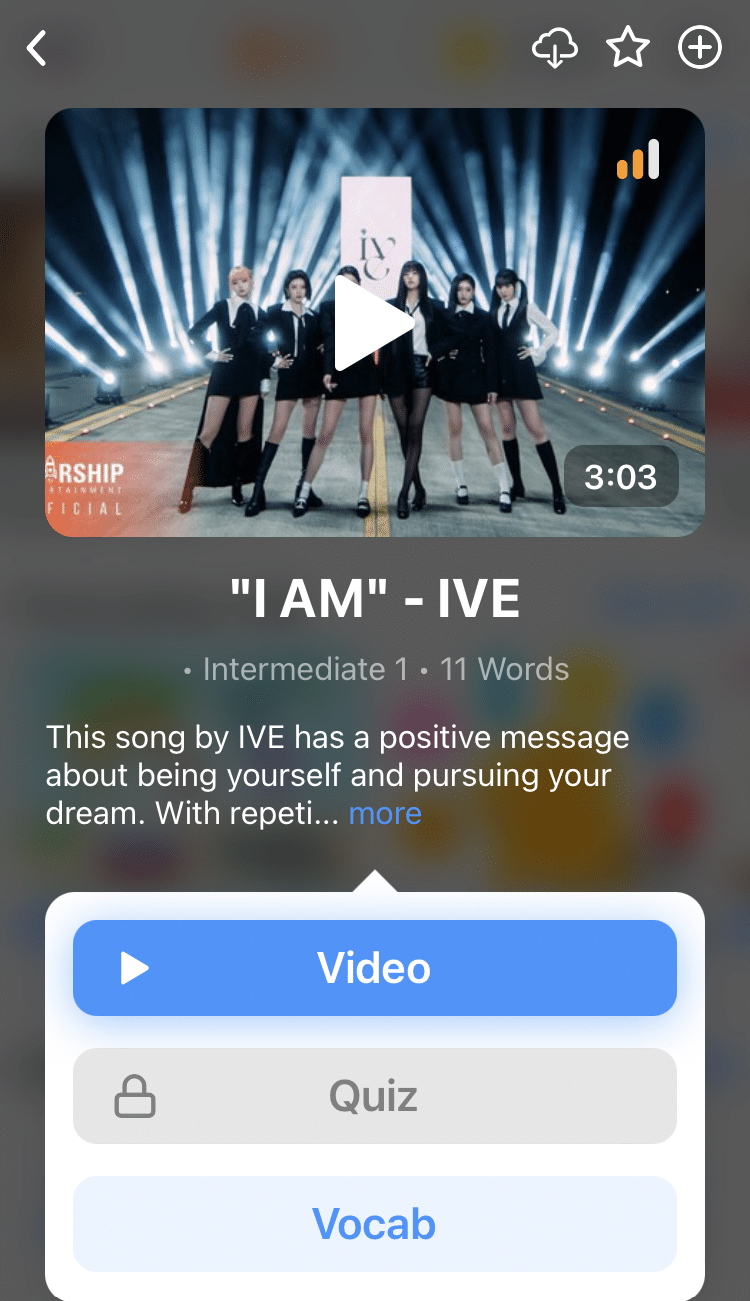
The Quick Guide to Telling Time in Korean
Racing against the clock to achieve Korean fluency?
That’s great, but remember, you have to learn how to read the clock, too!
In this guide, I’ll explain how to easily tell the time in Korean, including which number system to use, useful time-related phrases, and how to ask someone else for the time.
Let’s get started!
Contents
- How to Tell The Time in Korean: A Quick Overview
- How to Say The Hour in Korean
- How to Say the Minute in Korean
- How to Describe The Time of Day in Korean
- Common Time-Related Phrases in Korean
- What Time Is It in South Korea?
- And One More Thing...
Download: This blog post is available as a convenient and portable PDF that you can take anywhere. Click here to get a copy. (Download)
How to Tell The Time in Korean: A Quick Overview
To tell the time in Korean, you use the native Korean number system (하나, 둘, 셋) for the hour, and the Sino-Korean number system (일, 이, 삼) for the minute.
After the hour, you put 시, and after the minute you put 분. So for example, if you wanted to say 1:45, you would say 한 시 사십오 분.
To learn more about native Korean numbers vs. Sino-Korean numbers, check out this video:
Keep reading to learn more about how to talk about the time, including how to put it into a sentence, and specify the time of day.
How to Say The Hour in Korean
Let’s start with the big hand of the clock first: the hour.
Use native Korean numbers for the hour
When talking about the hour of the day, you use native Korean numbers (the 하나, 둘, 셋 system).
Luckily, you only need to focus on numbers one to twelve to go around the clock!
But you might be wondering—what about the 24-hour clock?
The 24-hour system, also known as military time, isn’t as commonly used as the 12-hour system. It’s used within the military (naturally) and sometimes for transit schedules like bus or plane timetables.
So the most likely scenario where you’ll encounter the 24-hour system is traveling around Korea and taking public transport (which will probably be inevitable, especially in the busy Seoul city).
Even then, the 24-hour system is typically written in text and not spoken in everyday conversation.
The one major difference is that the 24-hour clock only uses Sino-Korean numbers. Remember this if you’re set on using this system, whether you’re an army enlistee or just think that military time sounds cooler.
Follow the hour number with 시
Once you’ve got down the hour number, there’s one more step: adding the word 시 after it.
시 is actually a counter word used for denoting the hour. It can essentially translate to “o’clock.” Without 시, you might sound as if you’re just sounding off numbers.
So let’s spin the big hand of the clock, Korean-style.
- 1:00 — 한 시 , not 하나 시
- 2:00 — 두 시 , not 둘 시
- 3:00 — 세 시 , not 셋 시
- 4:00 — 네 시 , not 넷 시
- 5:00 — 다섯 시
- 6:00 — 여섯 시
- 7:00 — 일곱 시
- 8:00 — 여덟 시
- 9:00 — 아홉 시
- 10:00 — 열 시
- 11:00 — 열한 시
- 12:00 — 열두 시
Notice that numbers 1, 2, 3 and 4 get “shortened” names when they’re used to describe the hour. Their new names roll off the tongue more easily as well (try saying 셋시 without feeling like you’re grinding your teeth)!
Use 시간 instead of 시 to describe a duration of hours
When you want to talk about a certain length of hours, just switch out the 시 counter with 시간.
So, for example:
And so forth!
Remember that 시간 also means “time” itself, so a number before it makes the difference in meaning.
How to Say the Minute in Korean
Now onto the little hand: let’s talk minutes!
Use Sino-Korean numbers for the minute
Once you’ve got down the hour, it’s time to let go of native Korean numbers and switch over to Sino-Korean ones for the minutes.
So yes, telling time in Korean means you’ll be juggling both of the Korean number systems. It might sound like a bit of a chore, but there’s a practical reason for it.
Overall, Sino-Korean numbers are simpler to use—especially for larger numbers. They follow a predictable system that makes it easy to jump between large increments.
So while native Korean numbers can work just fine for the 12 hours, Sino-Korean numbers make it a tad easier for counting up to 59 minutes.
And fortunately, the Sino-Korean number system is pretty easy to learn! If you haven’t yet mastered it, then take a bit more time to study up on the topic.
Follow the minute number with 분
Just as the word 시 goes with hours, minutes also have a special counter word: 분.
The way it works is exactly the same as with 시.
분 is also used for describing time duration in minutes. There’s no special counter like 시간 for it.
Tell the time by combining the hour and minute expressions
Now you’re all ready to put everything together. It’s time…to tell the time!
All you do is say the hour and then the minute, in that precise order. Ta-da!
Pretty easy, right? Here are a few examples:
- 1:45 — 한 시 사십오 분
- 8:13 — 여덟 시 십삼 분
- 6:59 — 여섯 시 오십구 분
How to Describe The Time of Day in Korean
No telling of time feels complete without one more clarification—are we talking AM or PM?
Here are common Korean expressions for the different times of day:
- 오후 — afternoon (PM)
- 오전 — morning, typically before noon (AM)
- 아침 — morning, typically in earlier hours (AM)
- 저녁 — evening, typically around dinnertime (PM)
- 밤 — night, typically close to bedtime (PM, use also for midnight)
오전 and 오후 can also be used as the general AM and PM denotations, respectively.
However, it’s good to know the other expressions as well. Oftentimes, Korean folks may get more specific in describing the time of day.
Describe the time of day before the hour and minute
In English, we tack on AM or PM at the end of the sentence. However, this isn’t the case in Korean.
In Korean, the time of day is clarified before the hour and minute. This means that in a Korean time expression, the time of day is usually the first thing to be said.
So:
- 10 AM — 오전 열 시
- 1:45 PM — 오후 한 시 사십오 분
- 7:15 AM — 아침 일곱 시 십오 분
- 9:30 PM — 밤 아홉 시 반 (or 오후 아홉 시 반 )
Common Time-Related Phrases in Korean
Now that we know how to tell the time, let’s talk about a few common expressions for talking about it.
Questions
지금 몇 시예요? — What time is it now?
몇 is a word that basically inquires “how many” there is of something. But in the context of time, it essentially translates to the “what” part of “what time is it?”. It’s often placed alongside counter words, like 시 for time.
우리 몇 시에 만나요? — What time should we meet?
As with the previous question example, you can see 몇 시 here again.
시간 얼마나 남았어요? — How much time is left?
시간 here would refer to the duration of time, not the word time itself. 얼마나 inquires “how much” or “how long” and is used when you’re discussing something that can be measured.
몇 시에 가요? — What time will (you or we) go?
If you want to ask someone what time they’ll be departing to a specific place, you can add the destination (plus 에) after 몇 시에. For example: 몇 시에 집에 가요? (What time will you go home?)
Answers
지금 _____예요 — It is _____ right now
Input the correct time in the blank. If the time includes minutes, then after the hour number + 시, you must add the minute number + 분.
______ 만나요 — Let’s meet at _____
Just fill in the blank with the correct time. Simple!
_____시간 더 남았어요 — There are _____ more hours left
Fill in the blank with the number of hours. The adverb 더 means “more.” If minutes are included, add that right after the hours have been stated. For example: 한 시간 십 분 더 남았어요 (There is one hour and ten minutes more left).
_____에 출발하자 — Let’s leave at _____
Nothing fancy here. Plop in the time you’re planning to depart. Don’t forget the 에 that comes right after you state the time.
If you want to hear these phrases in use, get a better grasp on the two Korean number sets or practice vocabulary in context, check out FluentU.
FluentU takes authentic videos—like music videos, movie trailers, news and inspiring talks—and turns them into personalized language learning lessons. You can try FluentU for free for 2 weeks. Check out the website or download the iOS app or Android app. P.S. Click here to take advantage of our current sale! (Expires at the end of this month.)
What Time Is It in South Korea?
South Korea uses Korea Standard Time (GMT+9).
If you want to know what time it is right now, and figure out the difference between KST and your own timezone, all you have to do is check out a website such as this one. Some phones also allow you to add different clocks to your phone, so you can always keep an eye on what time it is in South Korea.
So if you’re wondering when the best time to message your language partner or friends in Korea might be, this will help you keep track!
Looks like we beat the clock for this lesson, with plenty of time to spare for practicing what you’ve learned!
Download: This blog post is available as a convenient and portable PDF that you can take anywhere. Click here to get a copy. (Download)
If you enjoyed this post, you're already halfway to having the time of your life learning Korean with FluentU!
FluentU makes it possible to learn with K-pop videos, funny commercials, entertaining web series and more. Just a quick look will give you an idea of the variety of FluentU videos on offer:
FluentU really takes the grunt work out of learning languages, leaving you with nothing but engaging, effective and efficient learning. It's already hand-picked the best videos for you (which are organized by level and topic), so all you have to do is simply choose any video that strikes your fancy to get started.
Each word in the interactive captions comes with a definition, audio, image, example sentences and more.
Access a complete interactive transcript of every video under the Dialogue tab, and easily review words and phrases from the video under Vocab.
You can use FluentU’s unique Quiz Mode to learn the vocabulary and phrases from the video through fun questions.
FluentU keeps track of what you're learning, and tells you exactly when it's time for review, giving you a 100% personalized experience.
Review sessions use video context to help embed the words in your memory.
Start using the FluentU website on your computer or tablet or, better yet, download the FluentU app from the iTunes or Google Play store. Click here to take advantage of our current sale! (Expires at the end of this month.)
And One More Thing...







